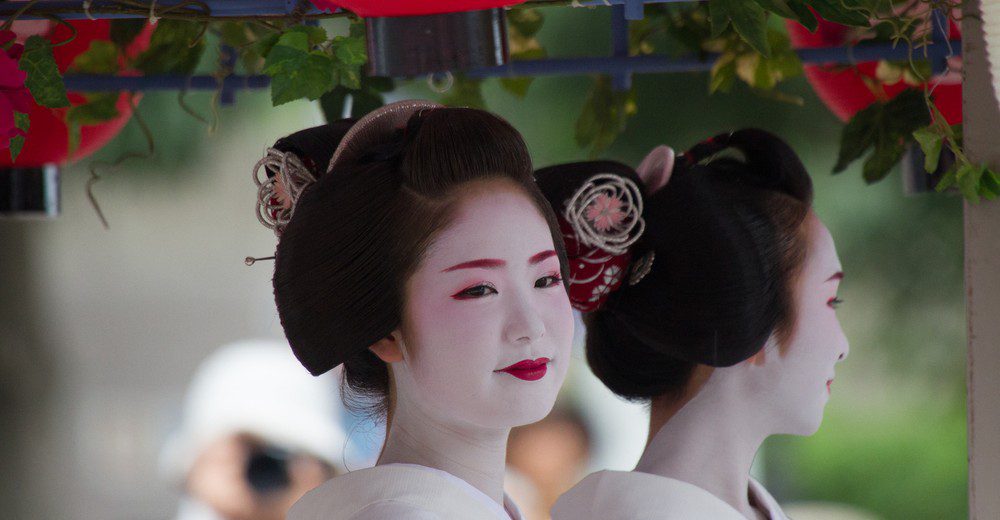1,000 years as Japan’s capital city, Kyoto has accumulated a trove of cultural and historical treasures that have been preserved till this day. A city where it’s still not uncommon to see a geisha on the streets.
Once Japan’s capital and the emperor’s residence from 794 until 1868, Kyoto is an impressive mix of history and modern elements.
Famous for spring cherry blossoms and autumn colours, it’s easy to forget that Kyoto has much to offer year round, outside the two peak seasons, the real Kyoto is much easier to find and visitors can be rewarded during peak tourist seasons.
Ryotei

Kyoto cuisine is amazing and one of the must try experiences would be a night at a high class ryotei. Dining in one of Kyoto’s ryotei is a total immersion into Japanese culture, where Zen Buddhist rituals of the tea ceremony are combined with culinary traditions.
The oldest in Kyoto and one of the most traditional of ryotei is Hyotei, located just down the hill from the Kyoto International Community House.
Meals tend to be heavy on fish and vegetables, and as they follow Japanese traditions. The menu items are not tailored to western palates, this is the real deal.
“A ryotei sums up the whole of Japanese culture. Our cuisine must reflect the season,” Eitichi Takahashi, Head Chef – Hyotei said.
The sequence of the flavours designed by the chef harks back to the old catering tradition of the teahouses. After the ceremony a meal would be served, with the succession of dishes following a strict order. This cuisine, known as chagaïseki, gave birth to Kyoto’s traditional cuisine, kaiseki.
Pontocho

A narrow alley running from Shijo-dori to Sanjo-dori, Pontocho is considered by residents and visitors as Kyoto’s most beautiful street in the city. There are no cars, modern buildings, or gaudy signs – instead it’s lined with traditional shops and restaurants. There’s a wide range of dining options from the inexpensive yakitori, foreign food, and ultra-exclusive establishments for those with the right connections and a huge bankroll.

If you spend some time waiting at the southern end of the lane around dusk on a Friday or Saturday evening, you may just spot a maiko (apprentice geisha) or geiko (fully-fledged geisha) going to an appointment at one of these exclusive establishments.
History and Culture

Kyoto was the capital of Japan for a thousand years and during this time it has accumulated a trove of treasures, there are 1600 temples and 17 world heritage sites. You can’t go to Kyoto without visiting some iconic temples and shrines.
Kiyomizudera is one of the most celebrated temples in Japan, founded in 780 on the Otowa Waterfall, it gets the name (‘Pure Water Temple’) from the fall’s pure waters. Behind the temple’s main hall stands Jishu Shrine, dedicated to the deity of love and matchmaking. There are two stones in front of the shrine placed 18 metres apart, it’s said that if you find your way from one stone to the other with your eyes closed, it would bring you luck finding love.

An important Shinto Shrine in Southern Kyoto is Fushimi Inari Shrine, famous for its thousands of vermilion torii gates straddling a network of paths behind the main buildings, the trails lead into the forests of the sacred Mount Inari. It’s dedicated to Inari, the Shinto god of rice.
Nijo Castle

Ninjo Castle was built in 1603 as the Kyoto Residence of the first shogun of the Edo Period, Tokugawa Ieyasu. After the Tokugawa Shogunate fell, the castle was used as an imperial palace and then donated to the city and opened up to the public as a historic site. The castle is lauded as the best surviving example of castle palace architecture from Japan’s feudal era.
Gion

Gion is Kyoto’s most famous geisha district,with shops, restaurants and ochaya (teahouses), where geiko and maiko entertain guests. The services of geiko are expensive and exclusive, traditionally requiring an introduction from an existing customer, however a more accessible experiece is the cultural show held every day at Gion Corner, a sort of Japanese culture 101, with short performances of a tea ceremony, ikebana, bunraku, kyogen comic plays and dances performed by real maiko.
Where to stay: Ryokan

A ryokan is a traditional Japanese inn with roots originating from the Edo Period, they’re a window to another world and usually features tatami-matted rooms and communal baths. Just note that the best ryokan’s in Kyoto also tend to be very expensive.
One of the best is Hiiragiya Ryokan, apparently starting out offering lodgings to samurai, but have also had Charlie Chaplin and Elizabeth Taylor as guests. The serene tatami mat guestrooms look out to an ornamental garden, en suite aromatic cypress baths and a very Japanese attention to detail.
READ: FIRST TIME IN JAPAN: Here are the places you absolutely must visit
READ: SETO INLAND SEA: 5 reasons why you need to explore the scenic waterway






